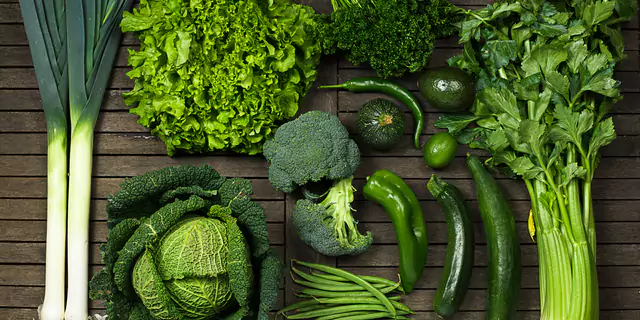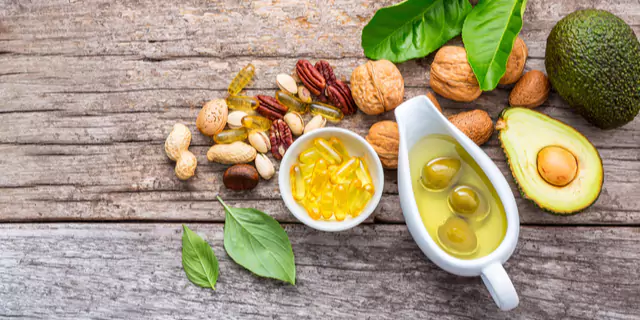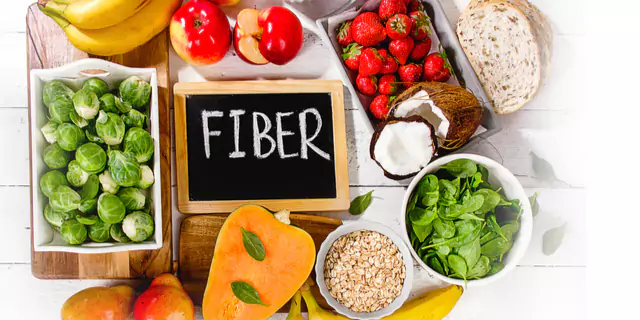Unlocking the Power of a Low-Glycemic Vegan Diet for Optimal Health

Key Takeways
There is a rising interest in plant-based foods, and one of the most popular plant-based diets is the vegan diet. There are many plant-based options with good glycemic index values, which you can compare with the help of our companion article here. The rising trend of plant-based foods can only give the discerning eater more options rather than fewer.
Since every individual metabolism is different, some people will handle certain ingredients better than others. Knowing which foods to eat and when or how to eat them is half of the battle for optimized nutrition and overall wellness.
However, if you’re watching your blood glucose, you have the extra constraint of wanting to keep the glycemic index of the foods you eat on the lower side of the spectrum. Fortunately, the vegan diet is naturally full of choices with low glycemic index values, much like the gluten-free diet.
Here are our guidelines for following a low-GI vegan diet and a low glycemic meal plan to help you stick to this diet.
General Guidelines for Eating a Low Glycemic Index Diet
The basic principle of the low glycemic index diet is to eat foods that will be metabolized slowly and with a moderate effect on blood glucose levels. There are many strategies to do this, and we have an article on the practice of food combining for low glycemic index diets here. The glycemic index is measured against the first two hours of blood glucose level rises, so the idea here is to avoid sharp increases in blood sugar, not to avoid starches in food entirely.
There are a few good options for managing blood sugar levels in hypoglycemia not related to diabetes. However, for anyone struggling to reduce their glycemic variability, a low glycemic index diet is a good option for blood glucose control and monitoring.
Pair Vegan Proteins with Complex Carbohydrates
Plant-based proteins are on the rise, as direct substitutions like nonspecific “plant burgers” and more specialized products like oat milk, almond butter, or mushroom steaks. In any case, we can look to the tried-and-true strategies for glucose control and adapt them as best we can for the vegan diet. When we look to the roots of this strategy, we can find that proteins derived from plants should be paired with complex carbohydrates.
The reasons for this are simple – a complex carbohydrate is more difficult for the body to digest, so it will take longer for the sugars inside of it to become reflected as glucose in the blood. If we take this line of thought to its logical conclusion, we can see that animal fats can also be substituted for plant-based fats. Avocado can often be substituted for butter, for example.

Proteins and Non-Starchy, Leafy Vegetables Have Extremely Low Glycemic Index Values
As mentioned earlier, the vegan diet is naturally rich in foods that have very low glycemic index values. Fortunately, that is the nature of the type of food the diet consists of, like cauliflower or spinach.
Of course, the vegan diet can also include starchy vegetables like pumpkin or potatoes, and this is an important point to recognize. Within the vegan diet, someone trying to prioritize low glycemic index foods will need to make adjustments to the types of foods they may otherwise consume.
Try Prioritizing Medium to Low Glycemic Index Carbohydrates
Fortunately, even some high glycemic index foods, like starchy bread and other vegan products, can be paired with low glycemic index proteins and leafy greens. The result of a dish made with starchy vegan options and less starchy vegan options will be a lower glycemic index.
For example, if you make a simple avocado toast, the low glycemic index of the avocado will lower the overall glycemic index of the meal compared to a simple piece of toast by itself. We think this is a bit of sleight of hand, however, since at the end of the day, you are eating a healthy option, the avocado, next to a less healthy choice, the toast.
Include a Balance of Fats, Proteins, and Fibers in Your Vegan Meals
This is the heart of our argument here – you can substitute the toast within the vegan framework for another food that can pair well with the avocado, like a leafy green salad with mushrooms, which would also have plenty of fiber.
hese are important, as fibers can provide a filling option with very low glycemic index values while remaining within the vegan diet. Another good option is a simple plant-based burger rich in fat and fiber with a lettuce wrap instead of a burger bun.

Try This Low-Glycemic Meal Plan for the Vegan Diet
Here are some vegan options to balance your plate with plenty of protein, carbohydrates, and healthy fats while still eating a low-glycemic diet.
Vegan Protein Options to Consider for Your Low Glycemic Index Diet
- Beans - Including Navy Beans, Pinto Beans, Black Beans, and Chickpeas
- Lentils
- Soybeans - Including edamame, tofu, and tempeh
- Nuts & seeds - Try soaking and sprouting the nuts and seeds for a higher protein content
- Seitan
One important thing to consider when starting a vegan diet is the importance of protein and nutrient completeness. The first question is easier to solve within the diet, as many plant-based proteins are available within the modern vegan diet. And again, within the constraints of a low glycemic index diet, these protein options are doubly important to consider. A comprehensive list of vegan protein options can be found here.

Vegan Fats to Include in Your Low Glycemic Index Diet
- Avocado
- Nuts
- Flax seeds
- Chia seeds
- Extra Virgin Olive oil
- Coconut oil
- Avocado oil
Fats are also an essential part of the balancing act inherent to the vegan low glycemic index diet. Here the issue would be to consume enough fats to counterbalance the potentially starchy vegan options when animal products are removed. Fortunately, there are many low glycemic index options in the vegan diet to simplify this process. A comprehensive list of healthy vegan fats can be found here.

Fiber Options for Low Glycemic Index Plant-Based Diets
- Brussel sprouts
- Asparagus
- Collard greens
- Broccoli
- Squash
- Turnips
Fibers are also relatively easy to find in the vegan diet since plant products tend to be richer in fiber than their animal counterparts. In general, fibers that support the other goals of the vegan low glycemic index diet are preferable to less supportive ones. For example, a serving of asparagus would be a good choice since it also has a low glycemic index and is a plant-based fiber. You can find a comprehensive list of vegan fibers here.
Find the right Nutrisense programto turn insight into progress.
Go Beyond Glucose Data with Nutrisense
Your glucose can significantly impact how your body feels and functions. That’s why stable levels are an important factor in supporting overall wellbeing. But viewing glucose isn't enough. Nutrisense, you’ll be able to learn how to use your body's data to make informed lifestyle choices that support healthy living.
One-to-one coaching
Sign up to access insurance-covered video calls to work with a glucose expert: a personal registered dietitian or certified nutritionist who will help tailor your lifestyle and diet to your goals.
Monitor and measure what matters
With the Nutrisense CGM Program, you can monitor your glucose with health tech like glucose biosensors and continuous glucose monitor (CGM)s, and analyze the trends over time with the Nutrisense App. This will help you make the most informed choices about the foods you consume and their impact on your health.
Find your best fit
Ready to take the first step? Start with our quiz to find the right Nutrisense program to help you take control.

Kara Collier is a registered dietitian nutritionist and certified nutrition support clinician who is passionate about reshaping how we approach prevention, behavior change, and metabolic health. A Forbes 30 Under 30 honoree, she’s helped over 150,000 people improve their metabolic health using tools like continuous glucose monitors and behavior-focused nutrition strategies. Kara has been featured by Forbes, UC Berkeley, and HLTH, and has appeared on top podcasts like Mind Pump and The Genius Life.




